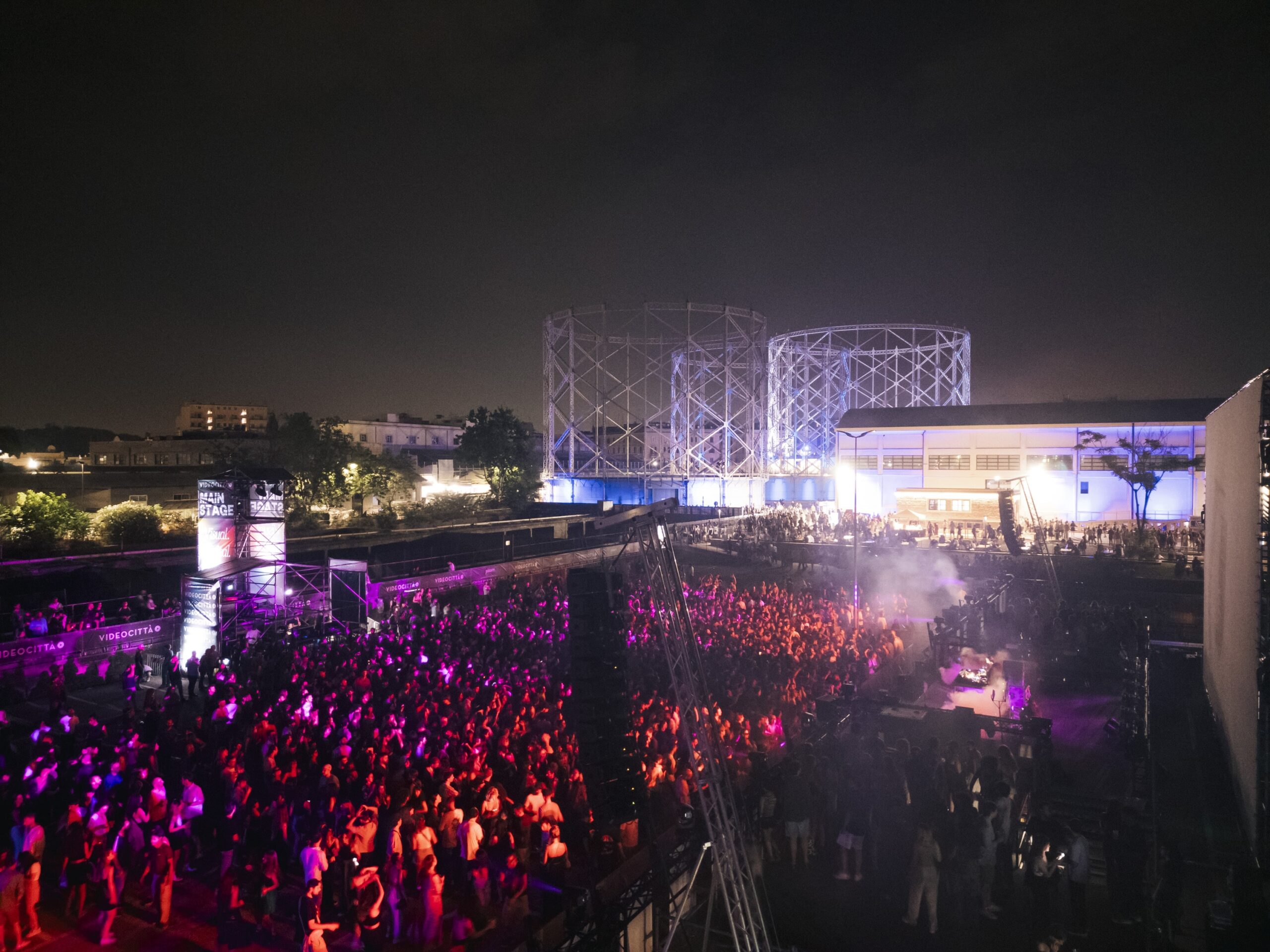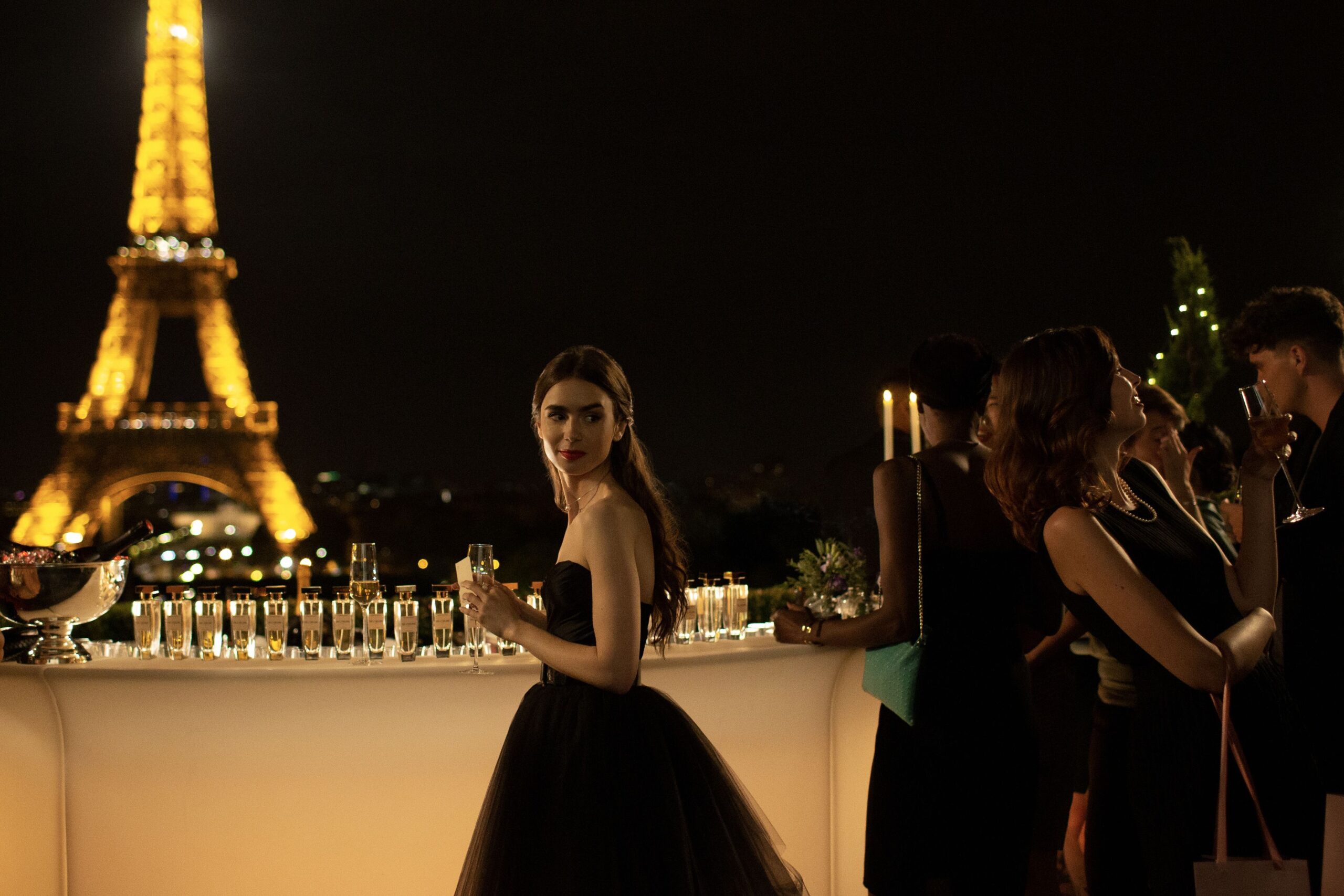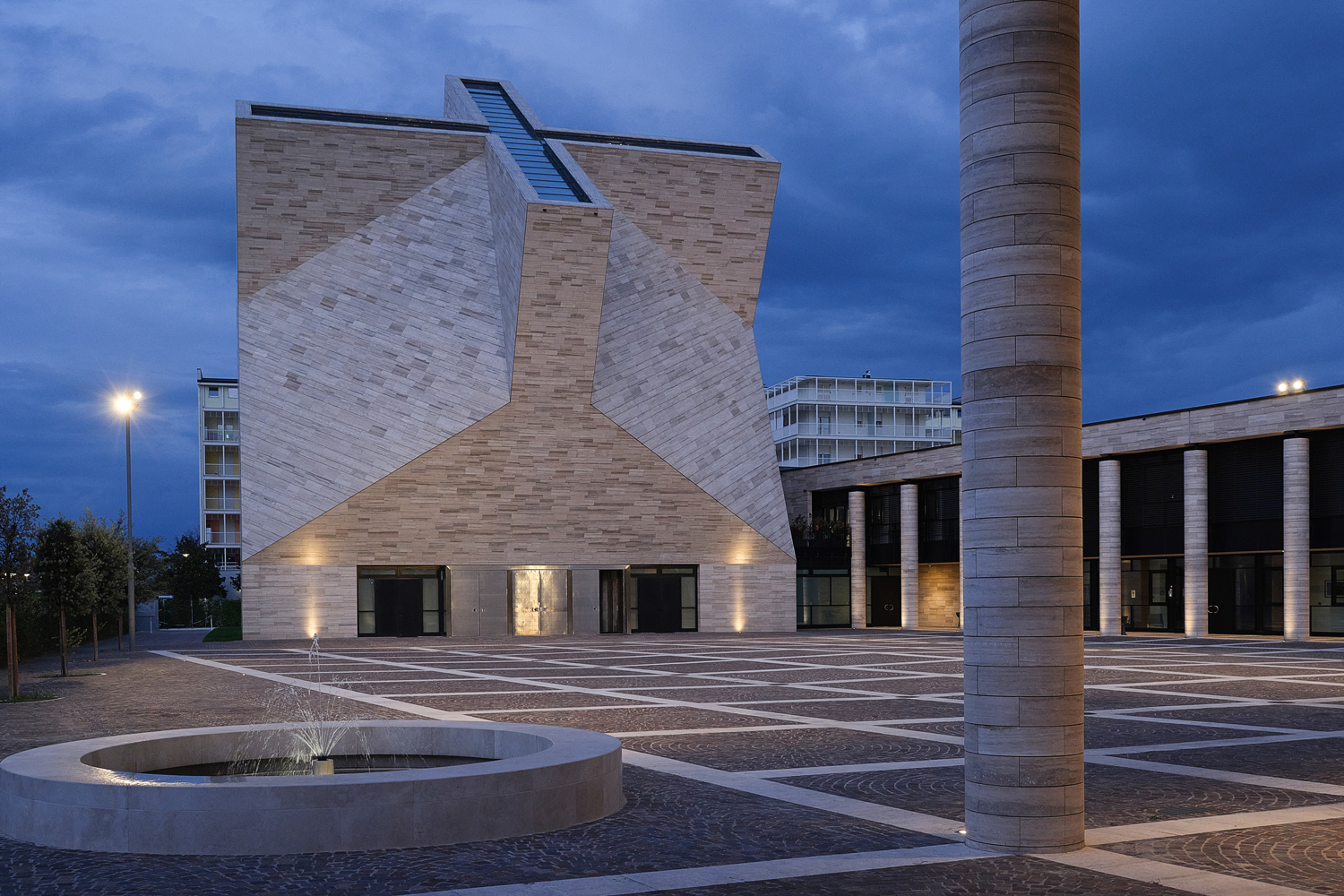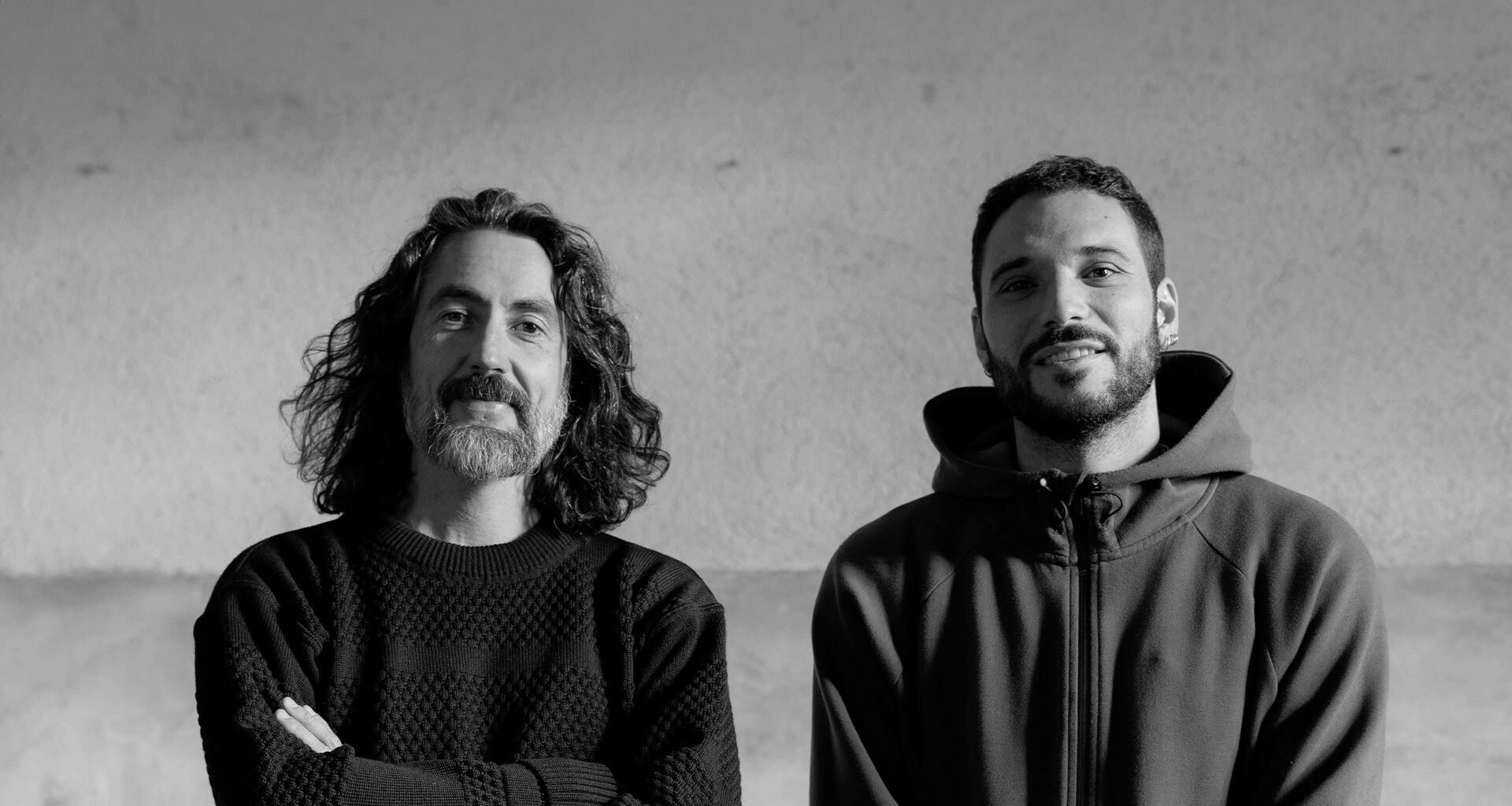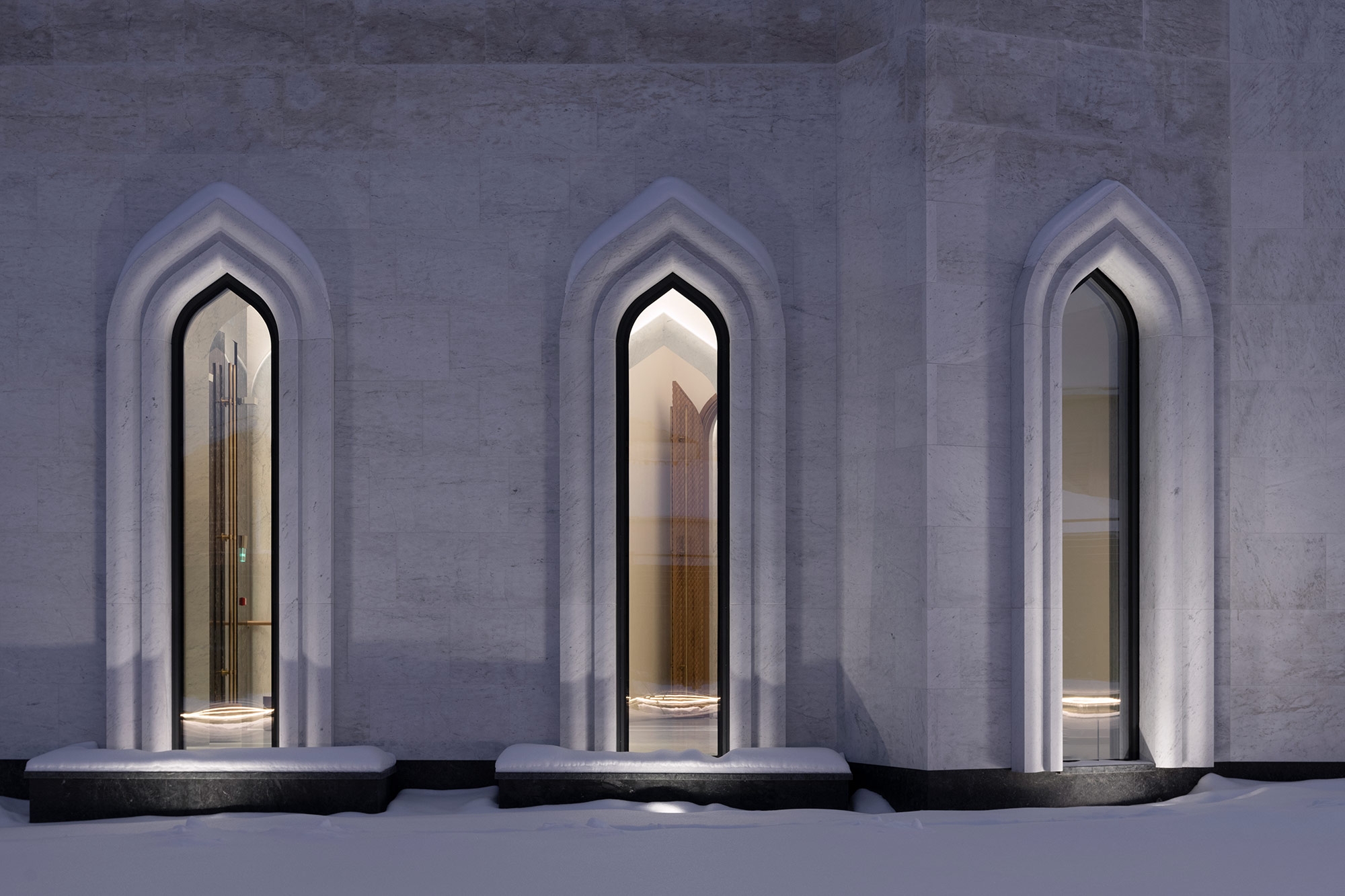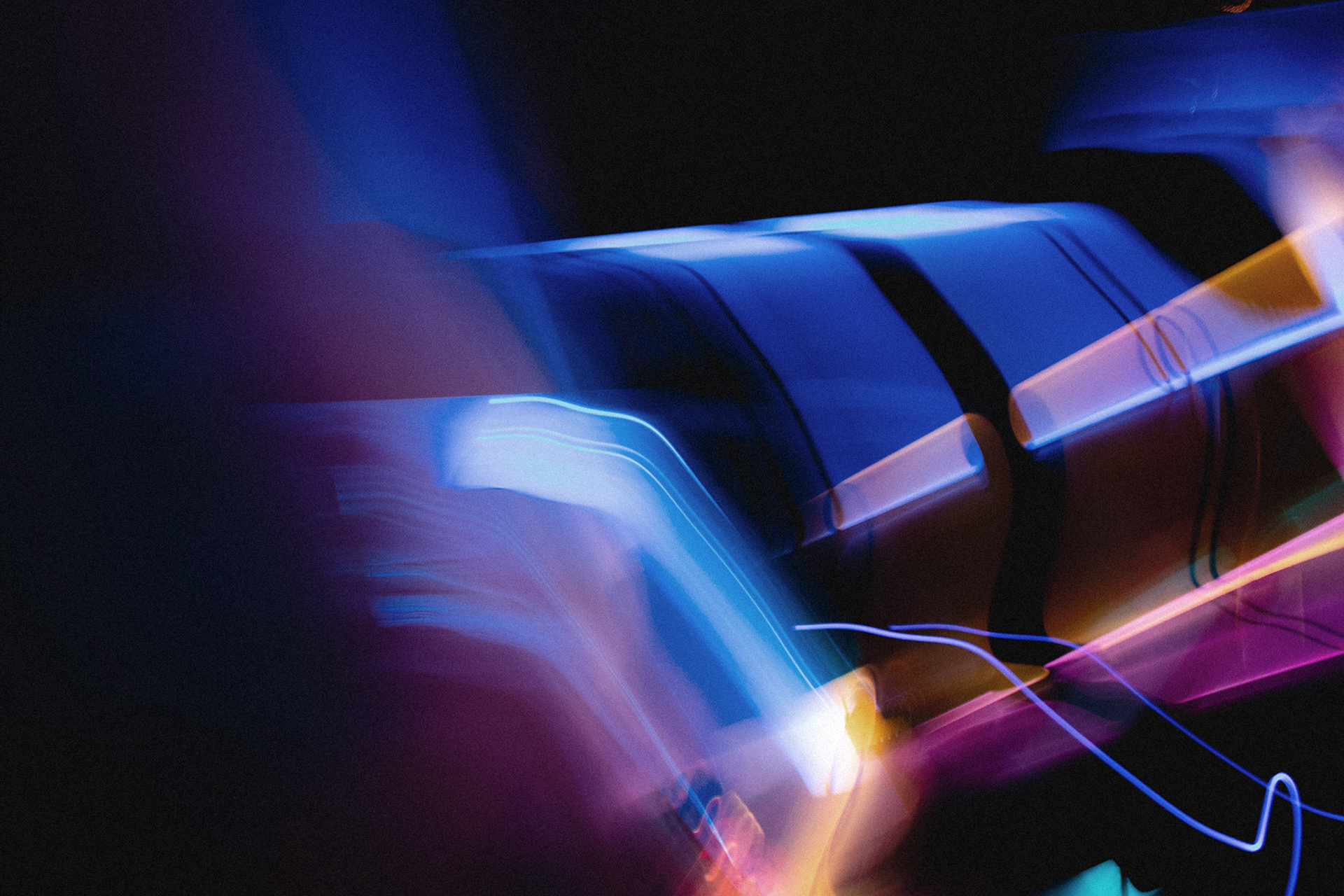Shining through Netflix’s spring 2025 lineup like a sunbeam—a Bourbon sun, blinding and golden—is a new series adaptation of The Leopard, a portrait of 19th-century Sicily reimagined in the era of Pinterest. Criticized by purists of Giuseppe Tomasi di Lampedusa’s novel and debated by fans of Luchino Visconti’s film, this series nonetheless captivates at first glance with its meticulous cinematography: a chiaroscuro play that reflects Italy’s fractures in a moment of transformation, through the symbolic contrast of brightness and shadow.
The cinematography of The Leopard offers a powerful visual suggestion: light as potential, penumbra as decline, and color as a psychological mirror. Through visual references and painterly echoes, its modern tableaux reframe a classic for a world where images are fast food—flashy, fleeting, and endlessly remixable. Director of Photography Nicolaj Brüel delivers an aesthetic that seduces Italy lovers, turning the story of unification into a social-ready beauty catalog. Right or wrong? That depends on the filter you’re using—to look at the story… and at History.
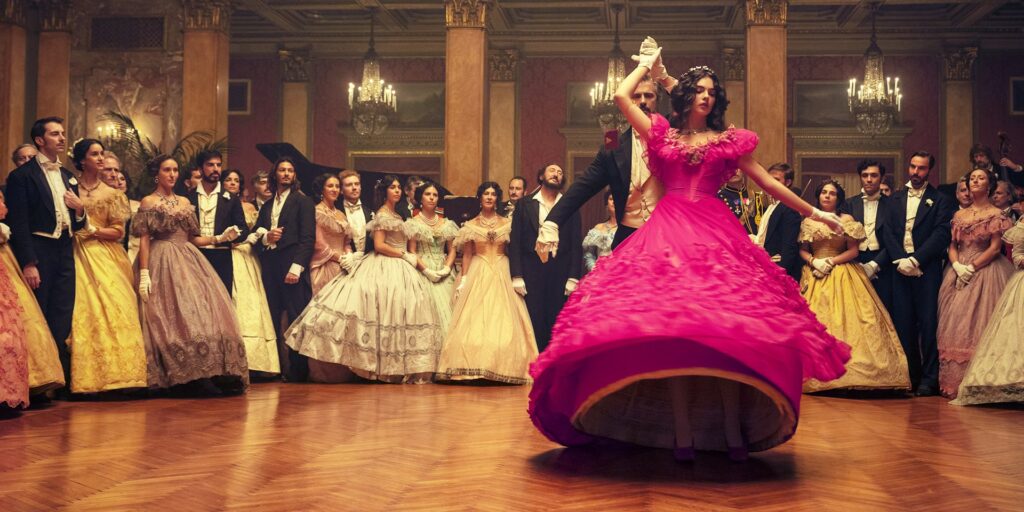
Netflix’s The Leopard: Why Does Everything Glow Golden?
There’s something magnetic about the images in the 2025 Netflix adaptation of The Leopard: everything glows. And it’s no mere aesthetic choice—it’s a declaration of intent.
Watching the series becomes a visual puzzle: spotting gold in every frame. Because here, gold is everywhere.
From the Prince’s opulent palace—played with wistful gravitas by Kim Rossi Stuart—to embroidered tablecloths, blooming orange blossoms, morning croissants, butter-yellow palettes, costumes, gardens, streets, and wooded carriage paths.
Even the reflected light bouncing off ballroom mirrors recalls the faded glory of the Sicilian aristocracy. Everything is wrapped in a warm, caramel light that turns the present into an already mythologized past.
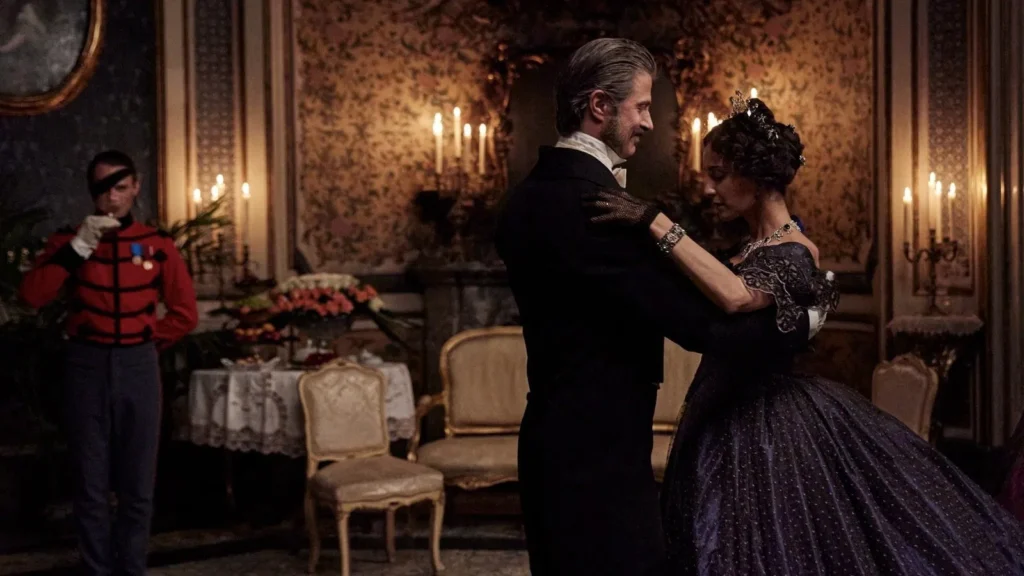
The result is a golden filter aesthetic seemingly made for Pinterest. Some have criticized this, accusing the series of turning Sicily into a postcard backdrop—something to speed through with a low-cost flight. But The Leopard’s golden imagery tells more than it shows. This is not just a story of political upheaval but of light in transformation. The light becomes both identity and loss. Like the Prince of Salina, slipping into shadowy disillusionment, we witness an Italy shot like a dream dissolving into daylight. The golden age becomes the age of compromise.
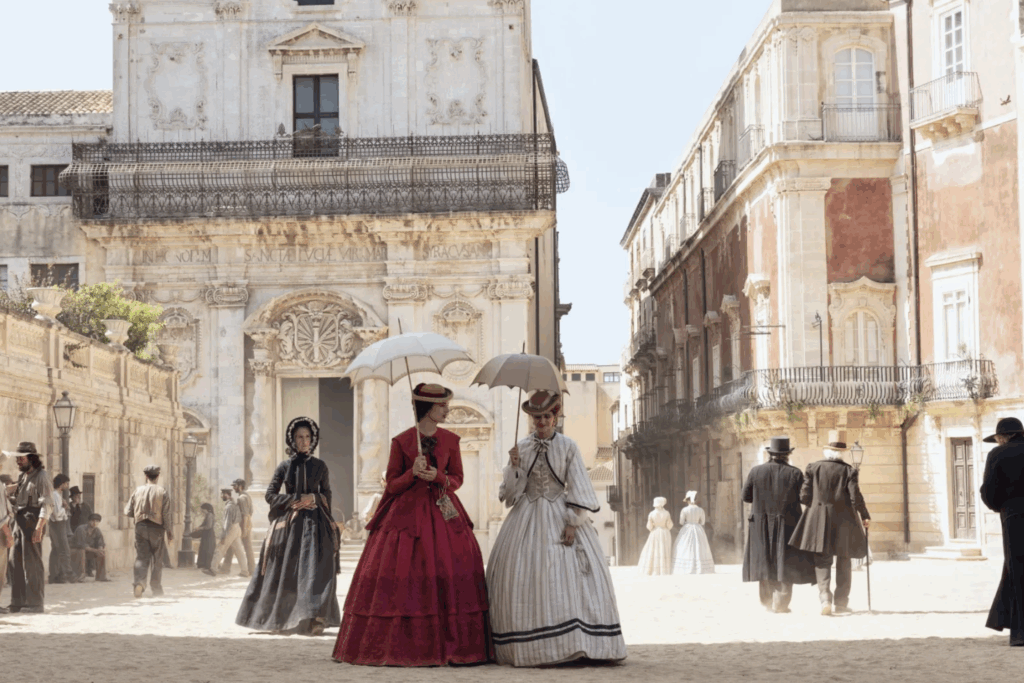
Sicilian painting: the visual inspiration behind Netflix’s The Leopard
Brüel took inspiration from 19th-century Sicilian painting—especially the landscapes of Francesco Lojacono—but updated the palette with the language of digital image culture: designed for screenshots, shared to convey mood.
Gold dominates every scene not by chance, but because the cinematography draws on the baroque and rococo imaginary of 18th-century Sicilian painting, where opulence defines an era. In moments of emotional balance, the light stands still; in more intimate scenes, Brüel uses diffusers and soft lenses to give it materiality, density, and a painterly texture. The golden effect results from a refined mix of natural light, warm artificial sources, and post-production color grading. Color temperatures range between 2800K and 3200K, creating a constant amber-honey tone that fuses architecture and characters into a cohesive visual world.
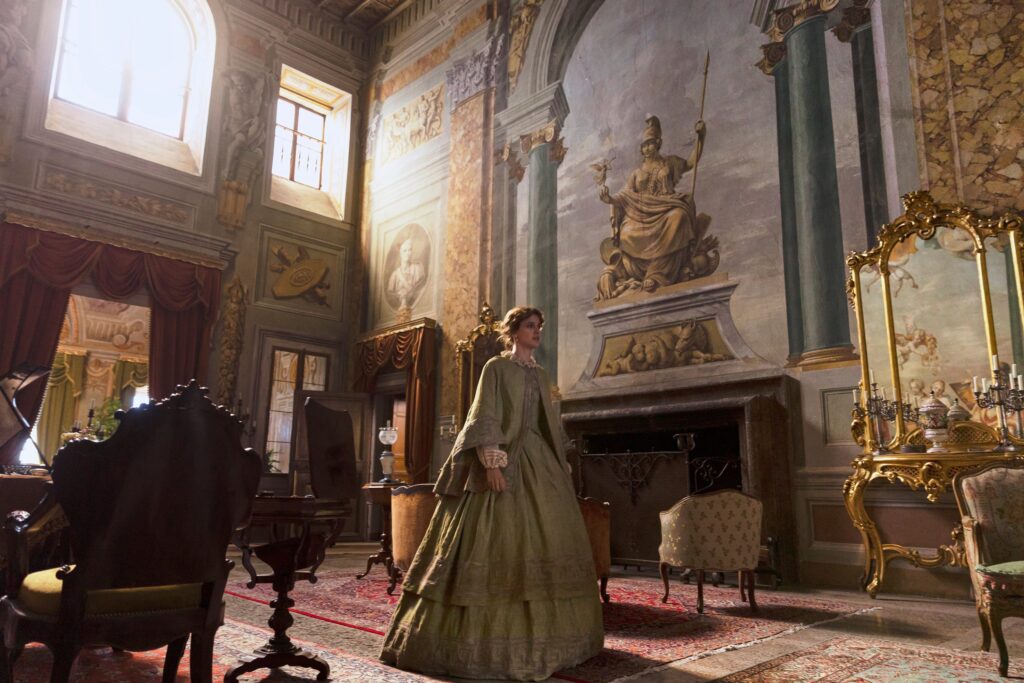
Shadows are never harsh but sculpted softly from the side, Rembrandt-style, adding depth and three-dimensionality. The chromatic balance favors hues of gold, ochre, and saffron, crafting a space where you can almost smell citrus or feel the sun on your skin. With its painterly genesis, The Leopard’s cinematography protects that “little ancient world.” Especially in the early episodes, each frame feels like an opulent still life: a Sicily already nostalgic for itself.
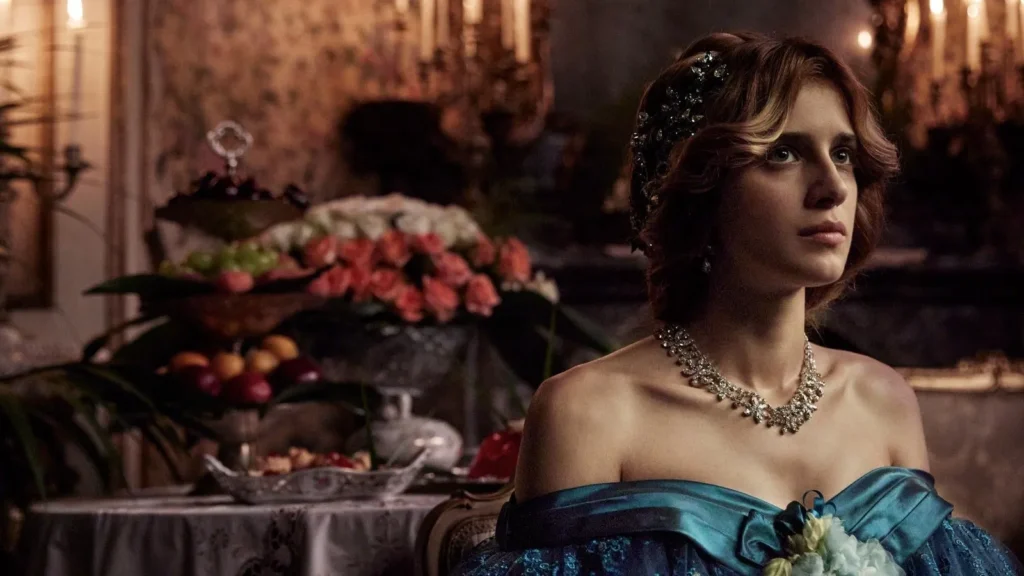
The darkness of The Leopard: the end of an era
If The Leopard’s golden light frames the comfort zone of Bourbon Italy and the Prince, then the shadows—lurking in corridors, in dim velvet-lined carriages escaping the Sicilian sun—corrupt Salina’s gold, pulling Don Fabrizio Corbera into a spiraling abyss. Director of photography Nicolaj Brüel uses the dominance of shadow over gold to depict a man unable to evolve with his times: Garibaldi, unification, and the rising bourgeoisie pass him by. In The Leopard, light is never neutral. Scenes set at night, or in spaces like the convent where the Prince’s daughter Concetta is eventually cloistered, are immersed in darkness.
Concetta herself, through her emotional descent, becomes the embodiment of that shift from light to shadow. Costume designer Carlo Poggioli told Vogue that Angelica Sedara—the young bourgeois set to steal Tancredi’s heart and crush Concetta’s hopes—wears bold Garibaldi red and vibrant fuchsia: the defiant colors of revolution. Concetta, in contrast, opts for softer tones: mint green, mauve, ivory, pale pink.
The chiaroscuros of the soul split this world in two: those who leap into progress survive. The others—like Fabrizio—are destined to dissolve into memories of golden days, as a colder, harsher light approaches. The shift from Palermo to Turin is emblematic. Here, the aesthetic changes tone, as director Laura Luchetti explained to Marie Claire: In Sicily, the dominant look was molten gold and blazing ochre—like a baroque painting. But in Turin, everything changes. Fabrics, décor, and objects become stiffer. And the light? It filters through windows with a cold, Northern detachment. A photographic choice that’s pure storytelling: where The Leopard’s sun fades, so does its world.
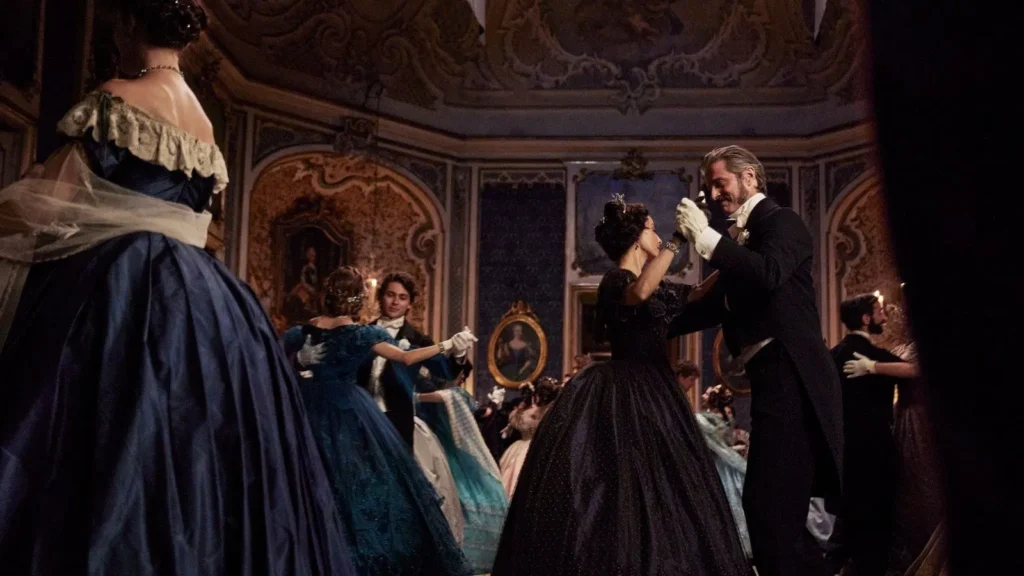
The light of The Leopard in the ballroom scene
In the long ballroom scene that closes the series, candle flames flicker on the dusted faces of Sicilian aristocracy, reflect off faded silks, and—between waltzes and sideways glances—reveal that this golden world is reaching twilight. It’s a visual moment that gracefully references Visconti through a digital lens: the chiaroscuro is soft, almost suspended, as if time itself were slowing down to grant one final breath of melancholy.
Some say the lighting in The Leopard makes it feel like the whole thing was a dream. The finale gives us the most intense moment: after the ball in darkness, where the Prince’s value system slips into night, he returns home at dawn with his daughter. As they ride together, the morning light is blinding—like the sun that grazes the roses in the garden. A final burst of brightness before the end.
